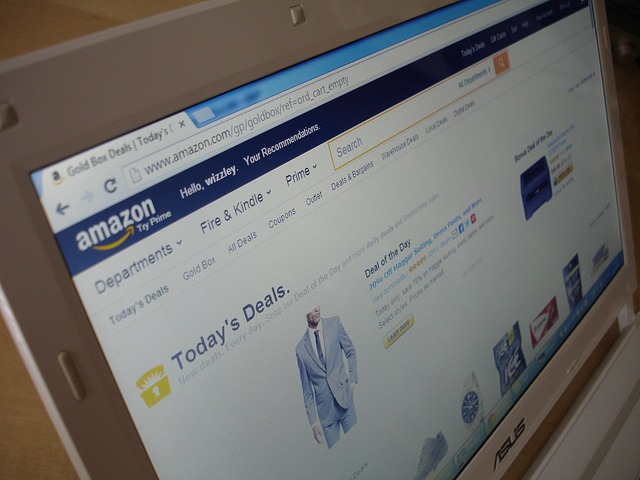How to Optimize Your Amazon Listings

To sell successfully on any platform, you need to be noticed. Amazon is no different, in fact as a massive global superstore it can be even more difficult. Showcase your products by learning how to optimize your Amazon listings. There are several key things that you need to do, in this article, we discuss the most important factors to bring your Amazon listing rankings as high as possible.
The importance of Amazon listing optimization
There are four main reasons as to why you need to optimize your Amazon listings. Firstly, you need to ensure your products rank highly in search visibility. Then as any online retailer, you are looking for a high click-through rate, conversion rate and actual sales. To ensure that your listings are optimized, consider keywords, optimizing the text within the listing, image content and the number of reviews you have.
Customers make a decision to purchase based on several factors that all revolve around trust. It is therefore important that you are building trust and reassuring potential customers. Not only do you have the product they want, but you will provide a service that leaves them feeling happy.
To help you optimize effectively, the below elements can help. You could also hire an Amazon marketing specialist such as Nuanced Media Los Angeles who will guide you through the steps.
Keyword optimization
The products that are displayed when a customer makes a search are those that contain the keyword used. So, if you have a pair of shoes listed but do not have shoes as a keyword, your listing won’t appear. It’s that simple. On your product page, you need to include all relevant keywords that relate to your product. Do some independent keyword research to make sure that you understand all the potential words customers will use when searching for your product. Once you have established what the best keywords are, place them within the listings strategically.
- Product Title: The algorithm that Amazon uses does not solely rely on keywords. However, you can place up to five of your top keywords in your product title as long as they do not appear cluttered, stuffed or unnatural.
- Bullet Points and Descriptions: When you write your product description, having bullet points first is a good idea. Customers will be scanning to see if this product looks like a match for what they want. You can then expand in your product description and explain more about the features and functionality. Add keywords here, making sure they fit naturally. Do not force keywords in disrupting the flow of the text.
- Backend Keywords: These are not seen by the customer and used solely by the Amazon search algorithm. You must keep this information to 249 bytes, any more than that and it will be ignored, and not get indexed. Ensure that the most important keywords are in this search term section.
- More Details: When you create a listing, you will be given an option to include extra details. For example, type of material used; use this information to its full ability. Fill in all of the fields, as customers can use this to filter and find specific products.
Content optimization
When you work on your content optimization, the natural result should be a higher click-through rate from search rankings. In turn, this should lead to a higher conversion rate, and therefore you will get more sales. As you get more sales on Amazon, you will also rank better in the search results naturally. How do you ensure that your content is effectively optimized?
There are several key areas you need to pay attention to:
- Images: Your images should be clear and high quality.
- Price: The price must be competitive and reflect others available in the same marketplace.
- Title: Pay attention to keywords but keep it natural.
- Attributes: Fill out as many attributes as possible.
- Questions and Answers: Answer customer questions comprehensively and quickly.
- Reviews: Encourage customers to leave a review of your product. Do not pay for reviews, this is frowned upon.
Optimize for the algorithm and customers
On Amazon, there are two things that search rankings interrogate. First is how you present your listings to the customer. Second is how the robots read your listings and back end content. These are key when you optimize your Amazon listings. When presenting a description of your product, you need to include as much information as possible, ensuring that a customer can make a good decision. Highlight the advantages of your product, including the unique selling points. Why should a customer purchase this product over something your competitors are selling?
Ensure that you don’t just dump all of this information in one hard to read, chaotic paragraph. Start by highlighting the basics in bullet points and ensure your paragraphs are short and succinct. Usually customers do not like to be faced with a barrage of text. When it comes to your main image, you should try and display the product alone on a white background. Additional images can include packaging, size charts, instructions and more. Additionally in this situation you can use backgrounds if needed.
Customer reviews
You may not have considered reviews as being key factors in your Amazon optimization, but they are. First of all, there is the number of reviews you receive. Secondly, the number of stars your product receives ranking it out of five stars maximum. One thing you must never do is purchase reviews from a fake source. Fake reviews get discovered and will lead to you potentially being suspended from the platform. The best way is to have a product that speaks for itself, and you can use emails or parcel inserts to ask customers politely if they would like to review the product.
 Ryan Flannagan is the Founder & CEO of NuancedMedia, an international eCommerce marketing agency specializing in Amazon. Nuanced has sold $100s of Millions online and Ryan has built a client base representing a total revenue of over 1.5 billion dollars. Ryan is a published author and has been quoted by a number of media sources such as BuzzFeed and Modern Retail. To connect with Ryan, check out @Ryanflannagan on Twitter or via Linkedin
Ryan Flannagan is the Founder & CEO of NuancedMedia, an international eCommerce marketing agency specializing in Amazon. Nuanced has sold $100s of Millions online and Ryan has built a client base representing a total revenue of over 1.5 billion dollars. Ryan is a published author and has been quoted by a number of media sources such as BuzzFeed and Modern Retail. To connect with Ryan, check out @Ryanflannagan on Twitter or via Linkedin